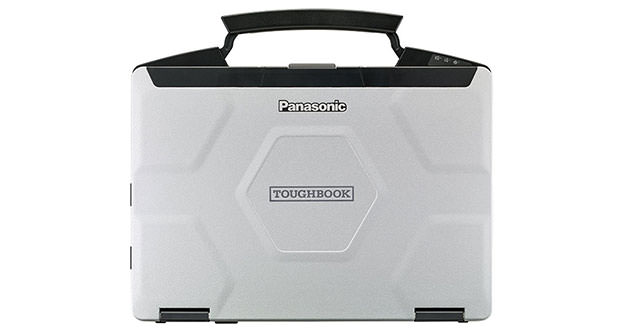Toughbook CF-54, which premiered in the Porsche factory in Leipzig, marks the transition to a new generation of semi-rugged, more power and flexibility of use, increased security, but also more portable than the generation previous. Usability, resistance to wear (and efficiency over time), lightness and subtlety, and finally performance modularity.
These are the five key points around which worked in proposing the new Panasonic Toughbook CF-54 that moves to a higher level the laptop concept of ” semi-rugged “, in a market that sees growing demand so much more sensitive than the pure rugged, dedicated to an extreme use, but also inevitably bulkier.
The Porsche factory in Leipzig, is the ideal setting for the presentation of the new Toughbook CF-54 by Mark Thorne, Managing Director Panasonic CPS and Jan Kaempfer, marketing director of Panasonic CPS, because the new semi rugged born as the ideal system for officers automotive diagnostic, but also lends itself to the round for jobs on the move – by representatives of trade, the globe trotter information and diagnostics, for those who simply need a laptop rugged, lightweight, reliable, and above Flexible perhaps with a configurable ad hoc for particular uses vertical, and then thought for the Defense, as for field workers in the utility’s sector, in urban environments, or simply for architects in mobility and why not, for those who want to sleep quiet and enjoy a laptop virtually resistant to any kind of abuse in the office, as the move, with the convenience of a handle for a secure grip.
Panasonic has listened to the requests of users who have made the fortune of ToughBook CF-53, on the one hand, has updated the technological equipment of the laptop. The other worked on portability, without compromising on the requirements of the laptop semi-rugged, with interesting innovations in this area too.
Toughbook CF-54 shows the rough finish known magnesium alloy (on all four sides, except the base), with the design honeycomb (honeycomb) which ensures greater strength and is more pleasing to the eye.
Especially arrives complete protection with respect to liquids on a keyboard and display, so as to be able to work without problems both in the case of the glass spilled coffee, as well as below the beginning of a precipitation weather.
Panasonic is cautious about the drop test. The laptop can survive in a flight of about 76 cm in height – certainly in these cases the internal components are fully protected – but we could see a demo of the simulation of a firm shock, perhaps resulting in a collision, and with a significant acceleration voluntary or accidental, an area in which this is better to rely to the upper segment.
Instead excellent is the resistance to extreme temperatures between -10 and 50 degrees, in full operation: in this case should never fear a slowdown of operation, or even more annoying, the classic slow start.

All this with smaller size and less weight: now Toughbook CF-54 is approximately 50 percent thinner (34.5 × 27.2 × 2.98 cm) and 25 percent lighter in comparison with the category leader (CF-54 weighs just under 2 lbs). Toughbook CF-54 is a laptop with 14-inch display is available with three different panels (resolution HD 1366 × 768, Full-HD 1920 x 1080 and Full-HD touchscreen), the display has a matte finish ensured by a film. The laptop will have optional discrete graphics with AMD FirePro M5100; the operating system is Windows 8.1.
This Toughbook CF-54 laptop comes with the new Intel Core vPro i5-5300U (3 MM of cache and 2.3 GHz, up to 2.9 GHz with Intel Turbo Boost Technology), but you can take with Intel Core i7 vPro. The configuration of the basic model (HD) provides 4 GB of RAM, expandable up to 16 GB and 500 GB of disk traditional – are optional disks 128 and 256 GB. The SSDs become rather standard models Full-HD, as well as table of specifications that we attach to the bottom of our article.
We were a little disappointed by a budget SSD after all limited, as in Panasonic ensure that there are no roads precluded the possibility of customization of specific orders in the volumes.



